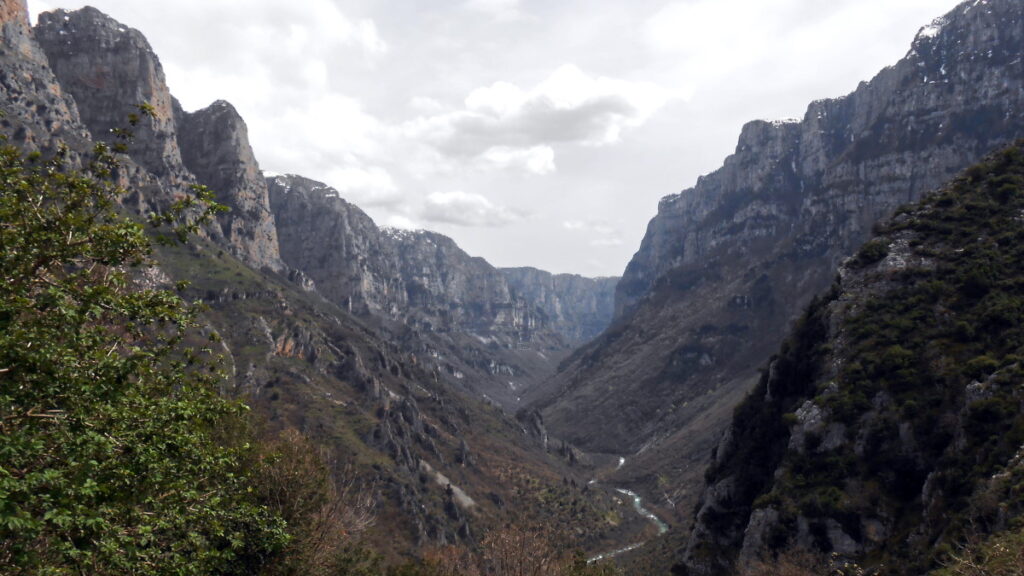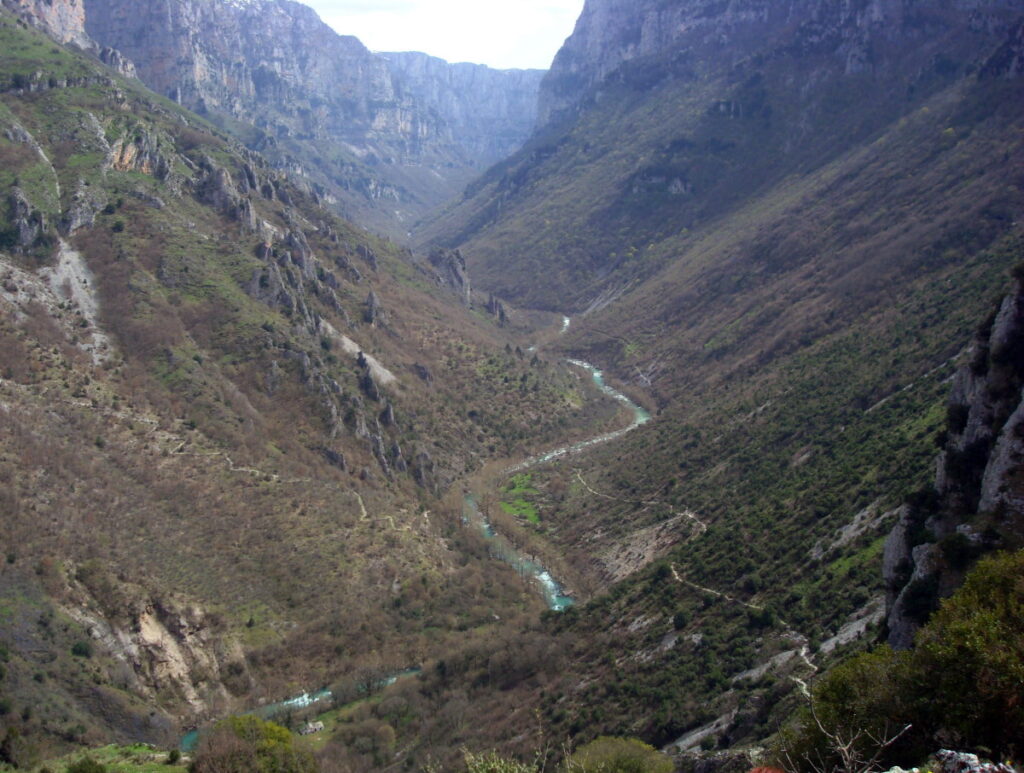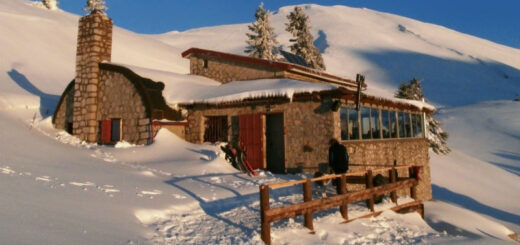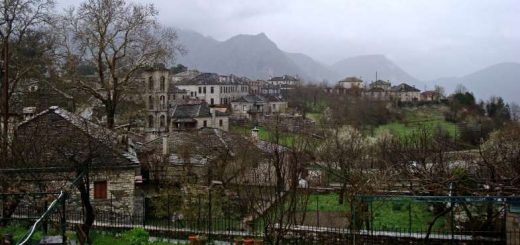Vikos Gorge
The Vikos Gorge or Vikos Canyon is a gorge in the Pindus Mountains of north-western Greece.
It lies on the southern slopes of Mount Tymphe with a length of about 32 km, depth ranging from 120 to 1,350 m, and a width ranging from 2,500 m to only a few meters at its narrowest part.
Vikos is listed as the world’s “deepest relative to its width” gorge by the Guinness Book of Records among others.
Name
The name Vikos probably comes from the Albanian word for bridge or wooden pass (vig-u or vig-ku) due to an Ottoman-era wooden bridge that was once placed in the canyon.
Location
The gorge is found in the core zone of the Vikos–Aoös National Park, in the Zagori region.
Its main part begins between the villages of Vitsa and Koukouli and ends near the village of Vikos.
The gorge collects the waters of a number of small, mostly seasonal streams and leads them into the Voidomatis River which forms in the end part of the main gorge.
The major part of the Vikos gorge stream is only seasonal, and is permanent only at the lowest part of the gorge.
Vikos is also a site of major scientific interest, because it is in almost virgin condition, it is a haven for endangered species and contains many and varied ecosystems.
Geomorphology
The Vikos Gorge, with a length of 32 km (20 mi), walls that range from 120–1,350 m (390–4,429 ft) deep, and a width ranging from 2,500 m (8,202 ft) to just a few meters at its narrowest part, is listed by the Guinness Book of Records as the deepest canyon in the world in proportion to its width, though some gorge lobbyists contest that claim.
The main part of the gorge stretches from the village of Vikos to Monodendri, and attains a depth of about 1,350 m (4,429 ft).
The landscape of the 32 km long gorge, 12 km οf which belongs to the park’s core zone, presents a diverse relief and is characterized by abrupt altitudinal changes.
Steep slopes and precipitous rocky cliffs dominate in the middle and higher zones respectively.
Numerous gullies dissect both sides of the gorge and the movement of water detaching various rocky materials creates extended screes.
The gorge, with a northwest-southeast direction, has been carved over millions of years by the Vikos Stream and its continuator Voidomatis River, a tributary of the Aoos.
Flora & Fauna
A significant number of herbs of the Vikos Gorge and adjacent areas within the Vikos-Aoos National park were regarded to have medicinal properties and were once harvested by local healers, colloquially referred to as “Vikos doctors”.
These herbal healers used special recipes that were often copies of ancient Greek recipes of Hippocrates or Dioscorides and became famous beyond the borders of Greece.
One of the special local attractions is the existence of the chamois (Rupicapra rupicapra), a rare species that lives at higher altitudes far from human activity, especially at the rocky cliffs, for example in Megas Lakos, a secondary ravine of the Vikos Gorge.
Recreation
There is a natural viewing platform over the deepest part of the gorge at Oxia, a location 8 km by a newly constructed road from the village of Monodendri.
Another viewpoint over the gorge is at Beloi, on the eastern side of the gorge, accessible from the village of Vradeto.
A hiking trail descends into the gorge from Monodendri. The trail then leads north through the gorge to the springs of the Voidomatis river, from where paths lead out of the gorge to the village of Papingo on the north side of the gorge, or to the village of Vikos on the south side of the gorge.
It is also possible to hike south through the gorge from Monodendri to the 18th century stone bridges near Kipi.














